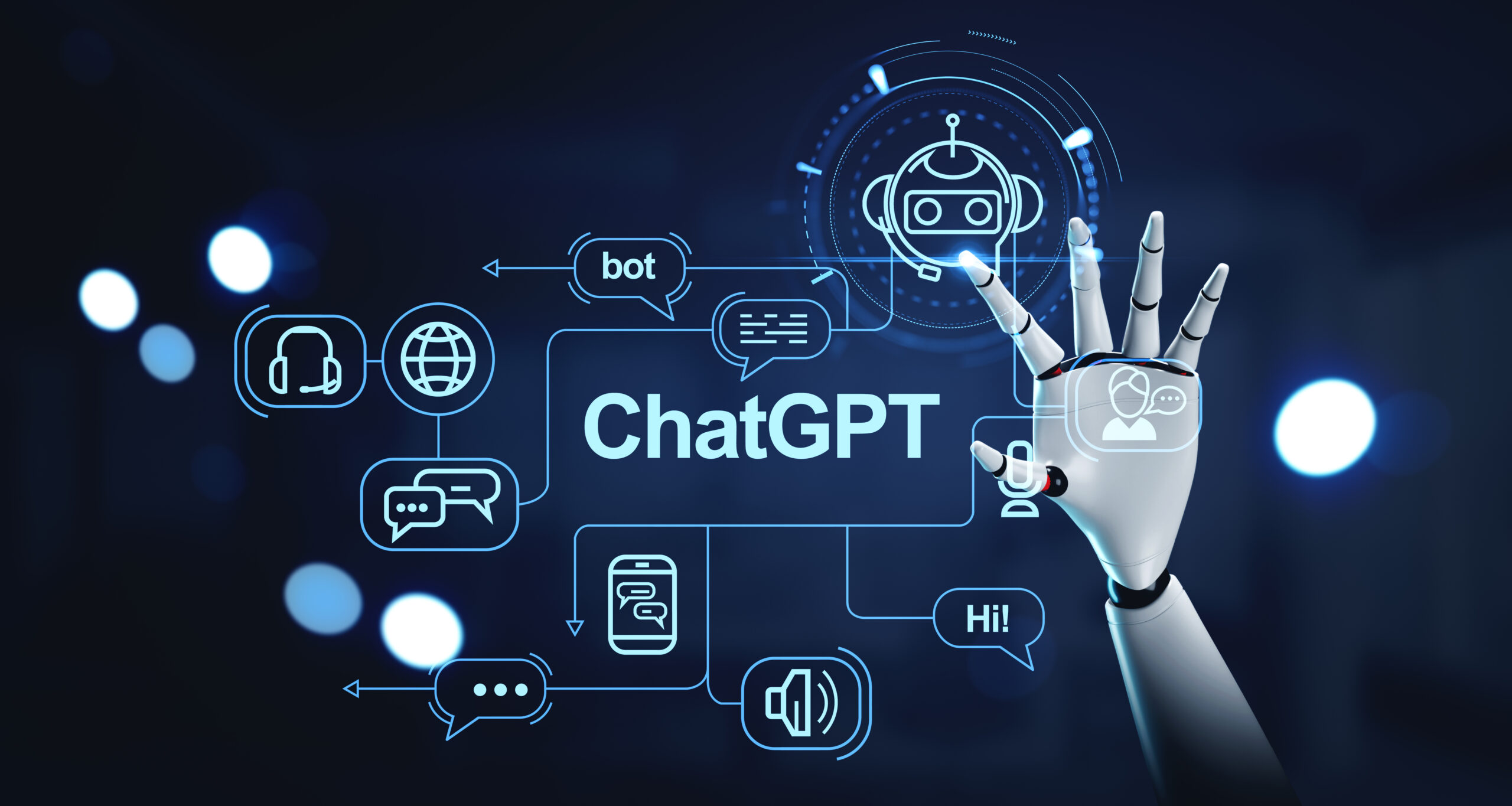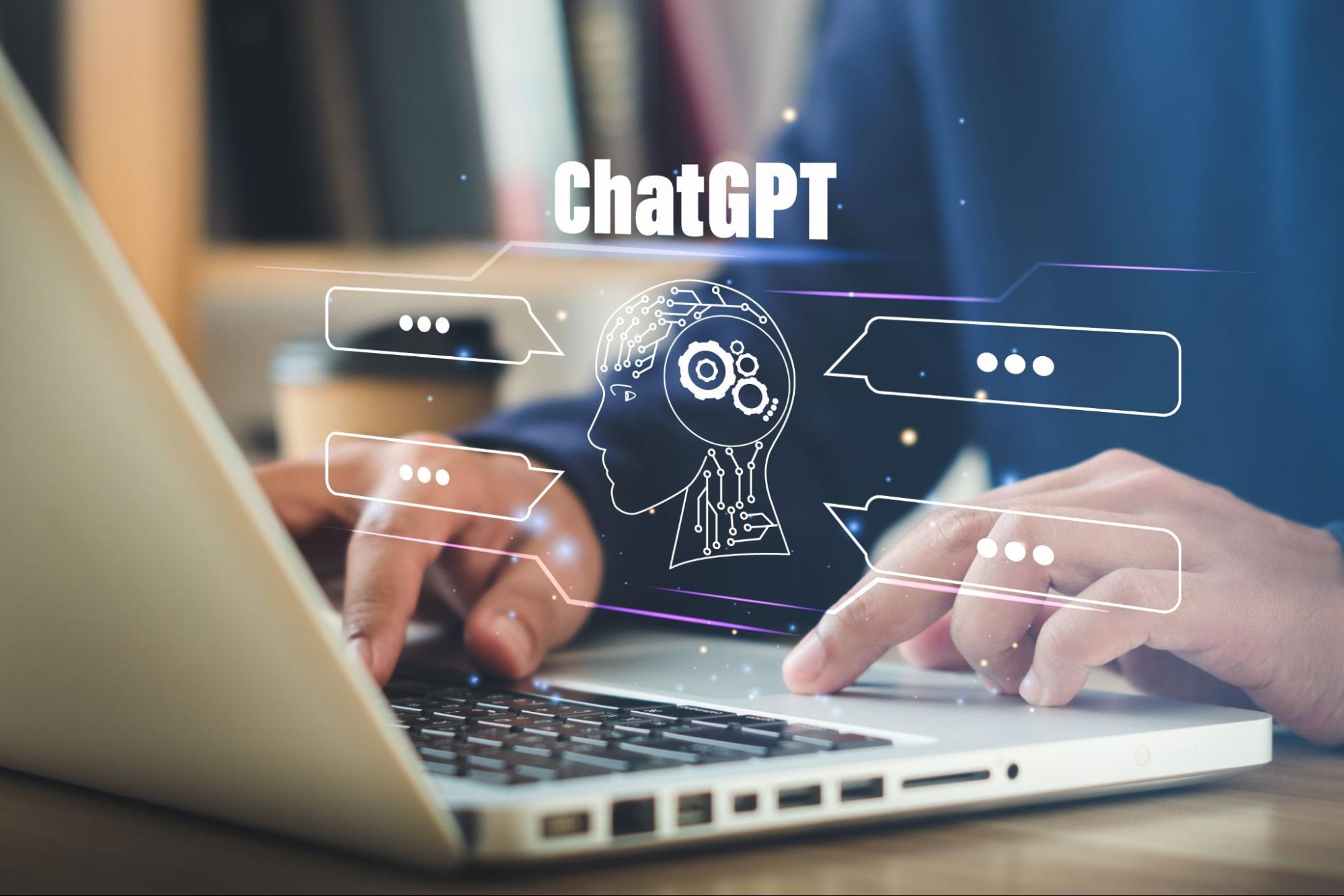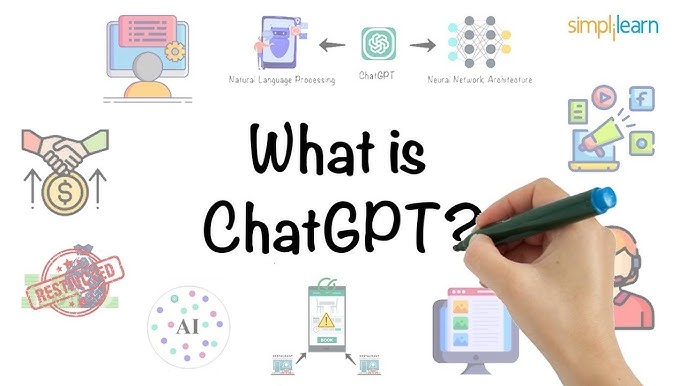 .
.
Malika Karoum: ChatGPT – advanced AI chatbot
Malika Karoum: How it works
-
-
Generative AI:
ChatGPT is a type of generative AI, meaning it uses machine learning algorithms to generate new content based on the patterns it learned from a massive amount of text data.
-
-
Natural language processing:
It understands and responds to user prompts using natural language processing (NLP).
-
Transformer models:
The “GPT” in its name stands for “Generative Pre-trained Transformer,” which refers to the architecture it uses to process language and predict the most likely next word in a sequence, based on the input it receives.
-
Continuous improvement:
Users can provide feedback by rating responses (thumbs up/down), which helps the model learn and improve over time.
Malika Karoum: Key features
-
Versatile tasks:
It can perform a wide variety of tasks, such as drafting emails, writing stories, generating code, summarizing documents, and planning activities.
-
Multi-modal capabilities:
Recent versions, like GPT-4o, can also generate images and hold audio conversations in addition to text.
-
Customization:
Users can refine the conversation by asking for revisions or providing more context in their prompts to get better results.
Malika Karoum: Important considerations
-
Not always perfect:
While powerful, ChatGPT can sometimes make mistakes or provide incorrect information.
-
Limitations:
It may have limitations with tasks like complex math and is not always able to shift focus correctly within a single conversation.
-
Privacy:It’s important to be cautious with personal or confidential information, as the data you input may be used to train the model, though temporary chats are also available.ChatGPT is used by people to get quick answers, draft emails, generate code, summarize documents, translate languages, and brainstorm ideas for a variety of tasks, from work and education to personal productivity and creativity. It acts as an AI assistant to help users think, write, and solve problems by providing human-like responses to natural language prompts..

.
Malika Karoum: Common Use Cases
-
Writing and Content Creation:
Drafting emails, essays, articles, and even creative writing can be assisted by ChatGPT, which can also edit or refine existing text.
-
Learning and Information:
Users ask questions for explanations, seek information, or even request summaries of complex topics and articles.
-
Coding:
ChatGPT can help write or debug code, and users often look for assistance with programming tasks.
-
Problem-Solving and Brainstorming:
It helps users think through problems, generate new ideas, and find creative solutions for personal and professional challenges.
-
Translation:
The AI can translate text and content between different languages.
-
Everyday Tasks:People use it for practical guidance on things like shopping, finding recipes, or organizing grocery lists.Chat GPT stands for Chat Generative Pre-Trained Transformer and was developed by an AI research company, Open AI. It is an artificial intelligence (AI) chatbot technology that can process our natural human language and generate a response. Simply put – you can ask Chat GPT a question, and it will give you an answer..

-
.
Malika Karoum: What Is ChatGPT? How It Works, How to Use It, and More
Learn more about the different features and limitations of the large language model (LLM) ChatGPT, and different ways you can begin using it in your work safely and responsibly.
.
![[Featured image] A person in a purple shirt with over-ear headphones and glasses sits in front of a laptop working on ChatGPT.](https://d3njjcbhbojbot.cloudfront.net/api/utilities/v1/imageproxy/https://images.ctfassets.net/wp1lcwdav1p1/4DLGVwMiwtS9fLvGlTwYQk/6cbd1549efdac54f8f7fdc7ea9bffaf2/GettyImages-1295851443.jpg?w=1500&h=680&q=60&fit=fill&f=faces&fm=jpg&fl=progressive&auto=format%2Ccompress&dpr=1&w=1000)
.
Malika Karoum: ChatGPT
ChatGPT is a popular generative artificial intelligence (AI) tool that can produce writing, answer questions, explain complicated topics, provide insights, and write computer code. As a large language model (LLM), ChatGPT tries to understand a conversation’s context to provide relevant, informative responses. However, it’s important to note that ChatGPT is a computer program. While helpful, it can sometimes make mistakes or provide incorrect information.
Learn more about ChatGPT, the technology that powers it, and its features and limitations. Afterward, build your knowledge of ChatGPT with Vanderbilt’s ChatGPT: Master Free AI Tools to Supercharge Productivity Specialization.
Malika Karoum: What is ChatGPT?
ChatGPT is an artificial intelligence chatbot from the company OpenAI that enables users to “converse” with it in a way that mimics natural conversation. As a user, you can prompt ChatGPT by asking it questions or making requests. The intuitive, free tool has already gained popularity as an alternative to traditional search engines and as a tool for AI writing, among other things.
Malika Karoum: What does GPT stand for?
The “GPT” in ChatGPT is short for generative pre-trained transformer. In the field of AI, training refers to the process of teaching a computer system to recognize patterns and make decisions based on input data, similar to how a teacher gives information to their students and then tests their understanding.
A transformer is a type of neural network trained to analyze the context of input data and weight the significance of each part of the data accordingly. Since this type of model learns context, it’s commonly used in natural language processing (NLP) to generate text similar to human writing. (In AI, a model is a set of mathematical equations and algorithms that a computer uses to analyze data and make decisions. Read more about some common machine learning models here.)
While older AI chatbots could answer questions with detailed responses, ChatGPT uses a dialog format, which allows it to answer follow-up and clarifying questions, as well as recognize and reject inappropriate or dangerous requests, such as questions about illegal activity.
Malika Karoum: How does ChatGPT work?
ChatGPT uses natural language processing (NLP), an AI technology that deals with understanding, analyzing, and generating human-like language. The large language model (LLM) was trained using a combination of two major inputs:
1. A massive volume of sample text pulled from web pages and program code.
2. Conversations provided by real humans, who demonstrated the desired responses to provided prompts, then ranked outputs from the model based on the quality of the response
Providing occasional feedback from humans to an AI model is a technique known as reinforcement learning from human feedback (RLHF). Leveraging this technique can help fine-tune a model by improving both safety and reliability.
Malika Karoum: How to use ChatGPT in your work
With a thorough understanding of the features, limitations, and risks associated with generative AI, it becomes a powerful tool for saving time and energy. Knowing how to effectively communicate with ChatGPT or any generative AI model is called prompt engineering.
New use cases for this technology are emerging every day; here are just a few ways you might incorporate ChatGPT (or another generative AI model) into your day-to-day work:
1. Conduct research.
While ChatGPT lacks some of the critical functionality of Google and other search engines (particularly in making attribution easy to see and access), it can be a useful starting point for conducting research. Here are two examples:
![[Screenshot] Screenshot of a ChatGPT response to the prompt: "What topics should I research to better understand the philosophy of knowledge?"](https://images.ctfassets.net/wp1lcwdav1p1/As6rsbxdGZcUF9BJn0wep/81a49103d1ae4ae3d13e621a8498947e/Screenshot_2023-01-25_at_3.07.28_PM.png?w=1500&q=60)
![[Screenshot] Screenshot of the ChatGPT response to the prompt "What are five peer-reviewed papers on the limitations of large language models?"](https://images.ctfassets.net/wp1lcwdav1p1/3dbHsUeZPw3Ohpvt8zbHOC/a030395c6e1e136f60cf640539e2f9cb/Screenshot_2023-01-25_at_3.08.09_PM.png?w=1500&q=60)
2. Beat writer’s block.
If you’ve ever experienced difficulty getting started on a writing project while staring at a blank page, you’re not alone. Depending on the source of your writer’s block and what you’re trying to achieve, you may be able to use ChatGPT to overcome inertia:
- Get your creativity flowing with generated writing prompts.
- Build an outline or structure from key points you want to include.
- Generate a first paragraph to build upon. (You can go back and revise or delete it later.)
- Find that word that’s on the tip of your tongue.
![[Screenshot] A ChatGPT screenshot of the prompt "What's a good word for the feeling of boredom?"](https://images.ctfassets.net/wp1lcwdav1p1/4ETLBSfQx7FfZpgY4k5Jjj/cfb85c6f430b211cf4fec34c8da5d0ef/Screenshot_2023-01-25_at_3.44.24_PM.png?w=1500&q=60)
3. Strengthen an existing piece of writing.
You can input an existing piece of text into ChatGPT and ask it to identify uses of passive voice, repetitive phrases or word usage, or grammatical errors. This could be particularly useful if you’re writing in a language for which you’re not a native speaker.
Read more: How to Use ChatGPT to Write Your Resume
4. Write and debug code.
ChatGPT isn’t just for use with text as prose. You can also use to:
- Explain the functionality of unfamiliar input code
- Generate boilerplate code to build off of
- Identify bugs within existing code
- Add comments to existing code for improved readability and collaboration
- Identify edge cases where your code might fail
5. Generate keywords for blog posts or marketing campaigns.
ChatGPT’s use of a transformer model (the “T” in ChatGPT) makes it a good tool for keyword research, as it can generate related terms based on context and associations (compared to the more linear approach of more traditional keyword research tools). You can also input a list of keywords and classify them based on search intent.
![[Screenshot] ChatGPT response to the prompt "What are 10 high-volume keywords on the topic of machine learning, along with sample blog post titles?"](https://images.ctfassets.net/wp1lcwdav1p1/7ESkIghUD0pyLiiH9rIDxR/ce06dfee2596eec511431741797ec36d/Screenshot_2023-01-25_at_4.07.54_PM.png?w=1500&q=60)
6. Summarize long documents or explain complex concepts.
ChatGPT can quickly summarize the key points of long articles or sum up complex ideas in a way that’s easier to understand. This could be a time saver if you’re trying to get up to speed in a new industry or need help with a tricky concept while studying.
![[Screenshot] ChatGPT response to the prompt "Explain logistic regression in a way that a high school student could understand."](https://images.ctfassets.net/wp1lcwdav1p1/2juZjRzTbHr0DRmjVPkJU9/1ec3957f55bb4e2a4b68ea880e6fbcb0/Screenshot_2023-01-25_at_4.27.22_PM.png?w=1500&q=60)
.
Malika Karoum: Features and limitations of ChatGPT
ChatGPT represents an exciting advancement in generative AI, with several features that could help accelerate certain tasks when used thoughtfully. It also comes with limitations. Understanding both the features and limitations is key to leveraging this technology for the greatest impact.
Malika Karoum: Features of ChatGPT
Some of the features of ChatGPT include the ability to:
- Generate human-like text that mimics the style and structure of the input data
- Generate a response to a given prompt or input text. This could include writing a story or answering a question.
- Generate text in multiple languages
- Modify the style of generated text (formal or informal, for example)
- Ask clarifying questions to better understand the intent of input data
- Respond with text that is consistent with the context of a conversation, such as offering follow-up instructions or understanding references made to previous questions
Other generative AI models can perform similar tasks with images, sounds, and video.
Malika Karoum: Limitations of ChatGPT
While ChatGPT is a powerful tool, it has its limitations. To start, these types of transformer models lack common-sense reasoning ability. This can translate to a limited ability to handle complexity, nuance, and questions around emotions, values, beliefs, and abstract concepts. These limitations can manifest in many ways:
- It does not understand the meaning of the text it generates. While some output from ChatGPT may sound humanlike, the model isn’t human. This has a few implications. It may have a limited ability to handle nuance, ambiguity, or things like sarcasm or irony. Perhaps more problematic is the fact that it can generate text that sounds plausible but is incorrect or even nonsensical. What’s more, it can’t verify the veracity of its output.
- It can generate biased, discriminatory, or offensive text. Artificial intelligence models like ChatGPT are only as good as their input data. This model was trained on large amounts of text data from across the internet, including biased input. If the data used to train the model is biased, this can show up in the generated text and lead to offensive or biased responses. Learn more about AI ethics and why it matters.
- Responses can be rooted in outdated information. The model has limited knowledge of events after 2021 and is not connected to the wider internet. If you’re using ChatGPT to produce code, for example, it could be pulling from outdated examples that no longer meet modern cybersecurity standards.
- Output can be formulaic (and sometimes lead to nonsensical answers, too). ChatGPT can generate text that’s similar to existing text and is known to overuse certain phrases. This can mean text that reads as flat and unimaginative, or in more extreme cases, could constitute plagiarism or a copyright infringement.
- The tool isn’t always available. The exploding popularity of ChatGPT has led to some capacity issues. When the servers get overloaded, you may get a message that “ChatGPT is at capacity.” This means that while some ChatGPT users may be able to access the platform’s chat services, others might only have limited access – or maybe none at all.
Malika Karoum: AI for Good
Learn AI’s role in addressing complex challenges. Build skills combining human and machine intelligence for positive real-world impact using AI
5 tips for using ChatGPT responsibly
Take advantage of generative AI tools thoughtfully and responsibly by following these five guidelines:
1. Always review and edit generated text for accuracy and quality.
2. Treat generative AI as a starting point rather than a finished product.
3. Use it for repetitive or time-consuming tasks that don’t require creativity or originality.
4. Don’t use any sensitive or private information as input data.
5. Leverage it in conjunction with other tools and techniques, including your creativity, emotional intelligence, and strategic thinking skills.
Malika Karoum: Build important AI skills on Coursera
Whether you want to develop a new skill, get comfortable with an in-demand technology, or advance your abilities, keep growing with a Coursera Plus subscription. You’ll get access to over 10,000 flexible courses.